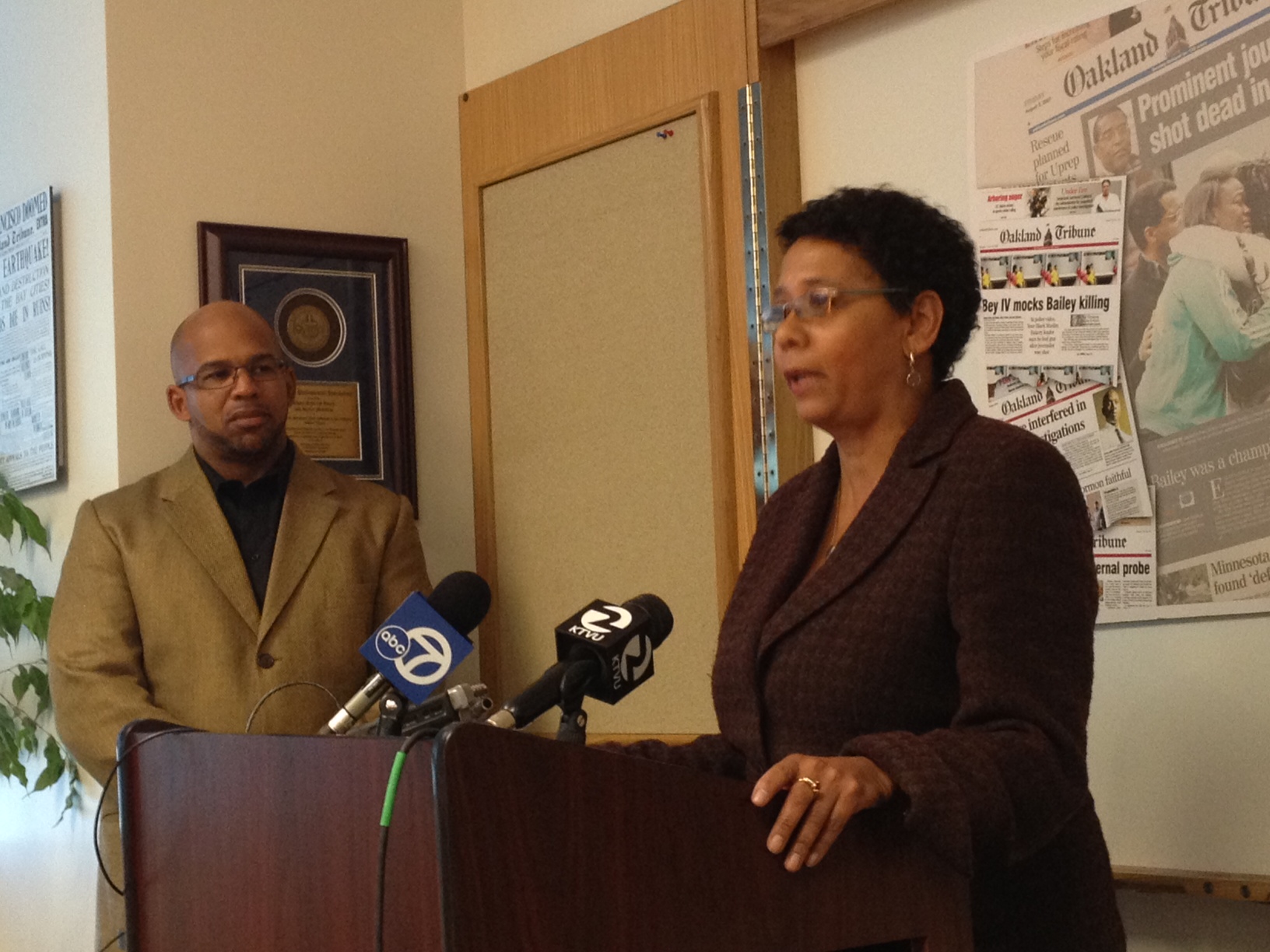
11th hour move saves the Oakland Tribune
Dori Maynard congratulates MediaNews on saving the Oakland Tribune after Martin Reynolds, left, explained the paper’s new media labs — Photograph courtesy Elisabeth Pinio
As I blogged, the nation’s second-largest newspaper group, MediaNews, was set on Nov. 2 to kill the Tribune.
I didn’t get it. MediaNews got big through “clustering”
- Buy papers next to each other;
- Retain their names and flavor;
- Merge ’em liked crazy behind the scenes.
Yet the company suddenly said it wanted to merge all its titles into two regional names. Like Frankenstein, the pieces of the Oakland Tribune would be sewn up with others into something called the East Bay Tribune. The citizens of Oakland didn’t buy it. They want their own newspaper. As long as newspapers are still around, a thin paper that’s yours is better than a fat paper that’s someone else’s. So they complained. To have hope, traditional newspapers need to create cultures of continous change. They need to embrace journalism in all forms and technologies. They need to engage their communities, to quickly admit mistakes and change course. I hope these are the trends behind the change of heart that in the 11th hour saved the 137-year-old Oakland Tribune.
At that moment, the management of MediaNews changed. Alden Global Capital, a hedge fund that has been gobbling up newspapers in recent years, took control of the Journal Register Co. A new company, Digital First Media, was formed to manage both the Journal Register and MediaNews (Alden owns a reported 40 percent of MediaNews.) Digital First’s new CEO, John Paton, thinks newspapers can transform into their digital age selves, but only if they are strong in local news.
Next thing you know, backers of the old plan are announcing a new one — as of last Thursday, The Oakland Tribune, Contra Costa Times and other papers will retain their names. Executives said they had received “feedback” from the community on the plan and a “request” from new CEO Paton to review it.
What’s hopeful about all this is that the newly saved Trib will open two community media laboratories in Oakland. Those will be run by former Tribune editor Martin Reynolds in his new job with the Bay Area News Group as senior editor for community engagement. Reynolds brought national notice back to the Trib by countering staff reductions with creative citizen journalism and collaborative journalism projects. Reynolds calls the media labs “open newsrooms,” offering wifi, blogging stations, community meetings, classes, open editorial meetings. The Trib also plans to expand its network of bloggers, perhaps partnering with newcomers like Oakland Local.
On hand for last week’s anouncement was Dori Maynard, president of the Maynard Institute, which champions media diversity. She helped Reynolds with the prototype media lab, a West Oakland citizen voices project. She also helped coordiate the successful Chauncey Bailey Project, the cooperative investigation funded by Knight Foundation that resulted in convictions for the mastermind and henchmen in the murder of Oakland Post editor Bailey.
Dori’s father, Bob Maynard, owned the Tribune during its best days for real journalism. I was lucky enough to run Bob’s newsroom. That’s where I saw, 20 years ago, during the coverage of the great Oakland fire, what a bonifide local news effort can do for a community. This is the kind of reporting power that we must find a way to recreate in the digital age. The Oakland media labs are just a first step in a very long road to find better forms of journalism as advocated by the Knight Commission. Still, any step forward is better than yet another step backward.
Recent Content
-
Journalismarticle ·
-
Journalismarticle ·
-
Journalismarticle ·


